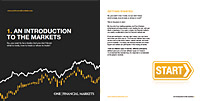

Investors eye Fed’s next move as Wall Street’s fear gauge jumps 50%
Global stock markets suffered a significant blow on Monday amid rising fears of a U.S. recession, prompting debates among investors and analysts about whether the Federal Reserve will need to accelerate its policy easing to support growth.
The latest market turmoil propelled the CBOE Volatility Index, also known as just the VIX index, by around 50% to 35.16, the highest since October 2020.
Often referred to as the "fear gauge," VIX measures the market's expectations of near-term volatility as conveyed by S&P 500 index options. It reflects investor sentiment and anxiety, with higher values indicating increased market uncertainty and potential turmoil. The index is widely used as a barometer of market risk and investor sentiment.
The sharp uptick in the fear gauge comes amid a broad equities sell-off triggered by a 12.4% crash in Japan’s Nikkei to 7-month lows, marking a level of loss unseen since the 2011 global financial crisis.
Alongside it, Nasdaq 100 Futures futures fell 3.3%, while S&P 500 futures dipped 2%. At the same time, EUROSTOXX 50 futures dropped 2%, and FTSE futures slid 2.4%.
The alarmingly weak July payrolls report led markets to price in a 78% likelihood that the Federal Reserve will not only cut rates in September but also ease by a full 50 basis points. Futures suggest 122 basis points of cuts in the 5.25-5.5% funds rate this year, with rates projected to be around 3.0% by the end of 2025.
"We have increased our 12-month recession odds by 10pp to 25%," Goldman Sachs analysts wrote in a note, though they believed the risk was mitigated by the Fed's substantial capacity to ease policy.
Goldman now anticipates quarter-point cuts in September, November, and December.
"The premise of our forecast is that job growth will recover in August and the FOMC will judge 25bp cuts a sufficient response to any downside risks," they added. "If we are wrong and the August employment report is as weak as the July report, then a 50bp cut would be likely in September."
Meanwhile, JPMorgan economists were even more pessimistic, setting the odds of a U.S. recession at 50%.
"Now that the Fed looks to be materially behind the curve, we expect a 50bp cut at the September meeting, followed by another 50bp cut in November," JPMorgan noted.
"Indeed, a case could be made for an inter-meeting easing, especially if the data soften further—although Fed officials might worry about how such a move could be (mis)interpreted."
Begin trading today! Create an account by completing our form
Privacy Notice
At One Financial Markets we are committed to safeguarding your privacy.
Please see our Privacy Policy for details about what information is collected from you and why it is collected. We do not sell your information or use it other than as described in the Policy.
Please note that it is in our legitimate business interest to send you certain marketing emails from time to time. However, if you would prefer not to receive these you can opt-out by ticking the box below.
Alternatively, you can use the unsubscribe link at the bottom of the Demo account confirmation email or any subsequent emails we send.
By completing the form and downloading the platform you agree with the use of your personal information as detailed in the Policy.






